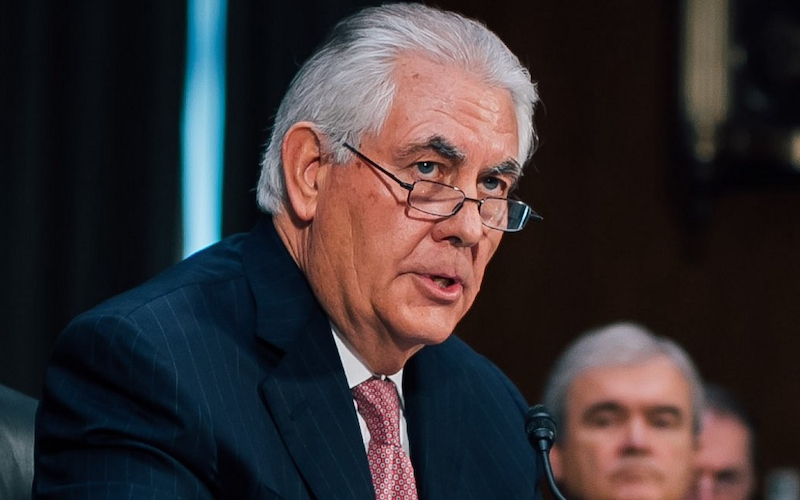
The Trinity of U.S.-Russia Security Affairs
US-Russia security affairs continue to converge, clash, and diverge in three major aspects: NATO, Missile Defense, and Cooperative Threat Reduction. The three aspects are not mutually exclusive and continue to coexist in fluctuating proportions. No accurate assessment of the relationship between the United States and Russia can ignore these three fundamental issues.
When the Kremlin believes the balance of international security is against it, Russia acts to thwart Western political and security architecture wherever it can. The Russian political system is not disdainful of Western civilization, but it does not approve of Western military and nuclear infrastructure infringing on the post-Soviet space or even the Eastern hemisphere in general. US-Russia security relations exist on the three pillars previously mentioned, and these issues on the world stage surmount any attempt to achieving a lasting, peaceful, and conducive relationship between the former Cold War adversaries.
The United States and NATO have consumed much of the world stage in terms of acquiring defense agreements and accelerating NATO membership exponentially. Russian Siloviki and hawkish military traditionalists responded to these security gains by threatening to end cooperation with NATO and cancel Cooperative Threat Reduction. Severing diplomatic and defense ties with NATO poses great international and geopolitical ramifications, while deemphasizing Cooperative Threat Reduction, which was Senators Lugar and Nunn’s hallmark achievement in nuclear security and US-Russia relations, impedes any progress in the post-Cold War world. Russia-NATO relations are currently at a toxic level, and nuclear cooperation is at stake.
Russia’s annexation of Ukrainian territory demolished Russia-NATO relations for the foreseeable future. NATO responded to what it viewed as “Russian aggression” by cancelling confidence-building measures and increasing military levels in Poland, Latvia, Lithuania, and Estonia, which effectively established a blockade against Russian conventional forces in Western Russia. This Chess move by NATO in reaction to the territorial dispute between Russia and Ukraine has compromised Russian security, and Russia has sought to return equanimity to the international security balance by continuing its support of Iran, Syria, and North Korea as a means to thwart Western designs on the world. Furthermore, Russia has intensified its “frozen conflict” paradigm in Ukraine, Georgia, and Moldova. After successfully evicting US-NATO defense architecture and personnel in Kyrgyzstan, US-NATO forces have acquired and established a base in Romania to Russia’s dismay. The international security maneuvering continues in perpetuity. The Black Sea and Baltic Sea are highly dangerous as Western and Russian military forces coexist in a de facto defense gridlock, which is a constant source of friction.
In 2002, George W. Bush withdrew the United States from the Anti-Ballistic Missile Treaty to Russia’s chagrin. It allowed the United States and NATO to have freer mobility in establishing missile defense infrastructure in the mission to establish peace in international security affairs. A US-NATO missile defense shield was established in Prague to counter the Iranian nuclear threat. The Prague missile defense shield was viewed by the Kremlin as a countermeasure against Russian nuclear and aerial weapons, which would effectively deny Russia first-strike or second-strike capabilities. Incidentally, the Terminal High Altitude Area Defense, the US-launched missile defense system, in South Korea further deepened military competition.
The United States sought to reinforce the will of the international community against Pyongyang’s unlawful nuclear program, but Russia, which shares a border with North Korea, viewed the situation as the United States seeking to compromise Russian military prowess in its Eastern territory. Russia responded by violating the 1987 INF Treaty and testing cruise missiles. This Russian practical abrogation of the INF Treaty created a quasi-Cold War between Russia and the United States. The nuclear subject-matter hinterland now experienced tremors unseen before 2014. When the New START Treaty was signed in 2010, it contained vague details on verification. Therefore, the nuclear chasm had no protocol or precedence. The escalating rivalry was in prodigious measure, and no procedural or policy steps to rectify the situation have yet to be taken.
The last few years have seen Russia’s dismal cooperation and ultimate deflection of direct and cohesive Cooperative Threat Reduction, specifically not cooperating with the United States and nuclear monitoring mechanisms to limit, control, and deescalate nuclear security tensions. Russia refused to continue abiding by the Nunn-Lugar nuclear framework, and it chose to agree to a Cooperative Threat Reduction plan with far fewer restrictions and hindrances to nuclear development. The state of arms control between Russia and the United States is currently an unknown in world affairs, but the nuclear and military posturing by both sides has not lessened because nuclear cooperation was greatly altered at Russia’s request and behest. The current triad of NATO, missile defense, and Cooperative Threat Reduction plague each other in fluctuating proportions wholly dependent on the international security balance between US-NATO and Russian forces. The trinity of US-Russia security relations will continue to affect the world stage in the foreseeable future unless a mutual diplomatic breakthrough in these three areas is achieved.

